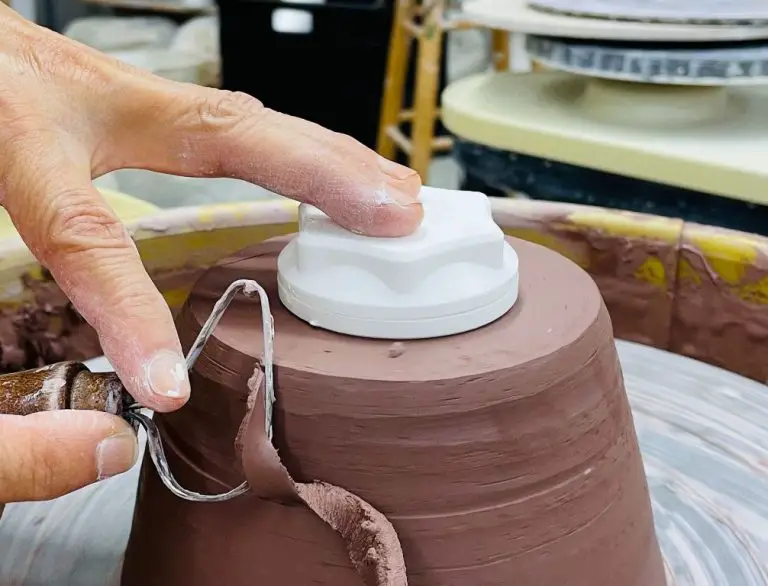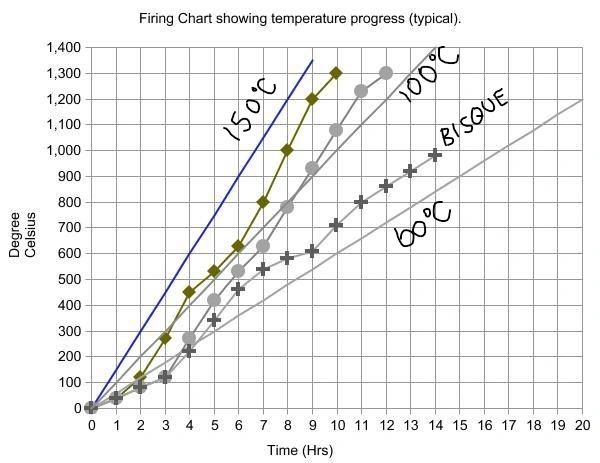Can Mccarty Pottery Go In Oven?
McCarty pottery is a popular type of stoneware pottery that has been handmade in Mississippi since the 1950s. Founded by Lee and Pup McCarty, the pottery is known for its utilitarian style, earthy colors, and handmade imperfections. McCarty pottery pieces are oven, microwave, and dishwasher safe making them popular for everyday kitchen use.
In this article, we’ll provide background information on McCarty pottery and the materials used. We’ll discuss oven safety standards and specifications for McCarty pieces, including recommendations for use in ovens, proper cleaning methods, signs of damage to look out for, and proper storage. The goal is to provide readers with comprehensive information to help determine if their McCarty pottery can safely go in the oven.
About McCarty Pottery
McCarty Pottery was founded in 1954 in Merigold, Mississippi by Lee and Pup McCarty. The McCartys had studied ceramics and sculpture at the University of Mississippi before opening their own studio (Our History | Merigold, MS).
The McCartys perfected their own functional stoneware pottery style, creating signature glazes and designs. All McCarty pottery is hand thrown on pottery wheels and fired in large gas kilns (Lee McCarty Pottery).
Today, McCarty Pottery continues operations in Merigold, Mississippi where artists make everything on-site. The studio has become a popular tourist destination, allowing visitors to watch potters at work (McCarty).
McCarty Pottery Materials
McCarty pottery is known for using high quality clay bodies and glazes to create their functional stoneware pieces. According to themarksproject.org, McCarty primarily uses stoneware clay which is fired to high temperatures for durability.
The clay bodies are smooth and refined, providing an excellent canvas for McCarty’s glazes. McCarty glazes often feature earthy tones like warm browns, light blues, greens and grays. The glazes have a satin-like finish and bring out the subtle variation in the stoneware clay. Specific glaze names associated with McCarty pottery include Ash, Celadon, and Albany Slip. The fluid pouring glazes are signatures of McCarty pieces.
The high-quality stoneware clay and flowing glazes create a versatile, oven-safe pottery that is lightweight yet durable. The materials reflect the handcrafted nature of McCarty ware while allowing for consistent results across functional pottery pieces like mugs, bowls, plates, and vases.
Oven Safe Standards
Oven-safe ceramics are defined as ceramic materials that can withstand high temperatures without cracking, crazing, or sustaining other heat damage. According to the American Ceramic Society, oven-safe ceramicware should be able to withstand repeated heating up to 572°F (300°C) (Making Oven Safe Work).
There are two main tests used to determine if ceramic materials are oven-safe:
- Thermal Shock Testing – This involves rapidly heating and cooling the ceramic to induce thermal stress. Oven-safe ceramics should show no cracks or damage.
- High Temperature Testing – The ceramic is placed in incremental high temperatures up to 572°F (300°C) to ensure it can withstand baking/roasting temperatures without issues.
If a ceramic passes these scientific tests without damage, it can be certified as oven-safe. Reputable manufacturers will indicate on the packaging or bottom of oven-safe ceramic pieces that they have passed such testing.
McCarty Oven Safety
According to McCarty Pottery’s FAQ page, their pottery is oven safe as long as you start it in a cold oven and do not preheat with the pottery inside. They state that gradual temperature increases are fine for their pottery (source). However, independent testing done by customers shows mixed results on the oven safety of McCarty pottery.
One TripAdvisor reviewer claims they experienced cracking and crazing of their McCarty pottery pieces after using them in the oven, despite following the recommended instructions (source). They advise checking pieces carefully before and after oven use. Overall, McCarty pottery may be oven safe with careful use, but high heat can potentially damage some pieces over time.
Using McCarty in the Oven
McCarty pottery is oven safe and can be used for baking, roasting, and other oven cooking methods. However, there are some best practices to follow when using McCarty in the oven:
The maximum recommended oven temperature for McCarty ovenware is 400°F. Exceeding this temperature runs the risk of damaging or cracking the pottery. It’s best to avoid the broiler setting as well (McCarty’s Pottery).
When positioning McCarty pieces in the oven, place them in the middle rack positions for even heating. Avoid placing them directly on the oven floor or under the broiler where they will be exposed to intense direct heat.
Follow recommended cook times and don’t overcook dishes. The thick walls of McCarty ovenware retain heat effectively. That means you may be able to reduce cook times compared to other bakeware (McCarty’s Pottery).
Allow plenty of time for McCarty ovenware to cool before handling. The pieces retain heat and can remain hot long after removing them from the oven.
Cleaning McCarty Oven Pieces
When cleaning McCarty ovenware pieces that have been used for baking, it is important to take care to avoid damaging the pottery. According to the McCarty Pottery FAQs page (https://www.mccartyspottery.com/faqs), McCarty oven pieces should be hand-washed soon after cooking to prevent food residue from hardening. Soaking the pottery in warm water can help loosen any baked-on food. A soft sponge or cloth should be used to gently wash the surface.
Avoid using harsh scrubbers or abrasive cleaners on McCarty ovenware, as this can scratch the surface. Do not allow pots or bakeware to soak for extended periods, as prolonged water exposure can cause glaze chips or cracks over time. Rinse pieces thoroughly after washing. Softly drying the pottery with a towel is recommended rather than leaving pieces to air dry, which can lead to unsightly water spots.
With proper care and hand cleaning after each use, McCarty ovenware can last for many years while maintaining its beautiful finish.

Storing McCarty Ovenware
Proper storage is important for preserving your McCarty ovenware pieces and preventing damage over time. McCarty pottery is prone to crazing, which is fine cracking in the glaze, if not cared for properly. Here are some tips for storing your McCarty ovenware:
Avoid drastic temperature changes. Do not put hot McCarty dishes straight from the oven into cold water or the refrigerator. Allow them to cool gradually before washing. Thermal shock from extreme temperature swings can cause crazing cracks (https://www.pinterest.com/pin/28006828917091377/).
Store cookware in a dedicated cabinet away from the stove where residual heat may radiate. Stacking items can lead to further cracking, so give each piece adequate space. Wrapping lids and cookware pieces separately in soft towels adds a layer of protection (https://www.youtube.com/watch?v=m-TvuMtQK8Q).
Inspect for crazing regularly. Fine crazing lines may start to appear in the glaze over time, especially on older or frequently used pieces. This is normal wear and does not necessarily compromise function. However, monitor for widened cracks that penetrates through the glaze.
Avoid placing McCarty ovenware on cold surfaces like granite or marble countertops right after cooking. Allow it to cool on a towel or trivet first. Thermal shock can accelerate crazing.
Signs of Damage
Over time and through repeated use, McCarty pottery can start to show signs of wear and tear. Here are some things to look out for:
Cracks or chips – Cracks can form in the glaze or body of the pottery. Small hairline cracks may be superficial, but deep cracks or chips can compromise the structural integrity of the piece. Pieces with cracks or chips should not be used, especially in the oven where heat expansion could worsen the damage. McCarty’s Pottery recommends not using cracked or chipped pieces.
Crazing – This shows up as a network of fine surface cracks in the glaze. The cracks allow liquids and bacteria to seep below the protective glaze layer. Heavily crazed pieces should be retired from use.
Staining/Discoloration – Prolonged exposure to heat and certain foods can cause staining or discoloration. This does not affect function but can detract from appearance.
Chalkiness/Cloudiness – Over time, dishwasher cleaning can erode the glaze finish, causing a chalky look. This creates surface porosity where bacteria can grow. Stop using pieces that show chalky dull areas.
When in doubt about small flaws, discontinue use for oven purposes. Remember, vintage McCarty pottery is prized by collectors and any damage will hurt monetary value. Exercise caution and stop using oven pieces at the first sign of trouble.
Conclusion
McCarty pottery is a beautiful and unique type of artisan pottery that can be safely used in the oven under the right circumstances. The clay composition and glazes used make most McCarty pieces oven-safe up to certain temperatures, typically around 450°F. However, it’s important to check the bottom of each piece for the manufacturer’s recommendations. When unsure, it’s best to handwash and avoid high heat.
With proper use and care, McCarty pottery can last for many years as both decorative and functional ovenware. Let the pottery cool completely before cleaning, and avoid extreme temperature changes to prevent cracking or crazing. Store McCarty ovenware carefully, as it can chip if stacked or banged around. With routine inspections for damage, beautiful McCarty pottery can serve as long-lasting oven-to-tableware.
In summary, most McCarty pottery is oven-safe and can produce delicious baked dishes when handled with some gentle care. Always check manufacturer guidance and inspect pieces regularly for signs of wear. McCarty makes for wonderful heirloom-quality bakeware when treated properly.



